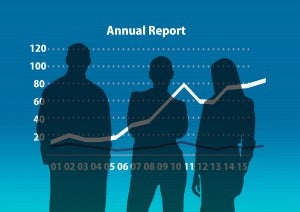 By Ellen Shenette, EDF Climate Corps Analyst
By Ellen Shenette, EDF Climate Corps Analyst
It’s no secret that renewable energy is becoming cheaper, and while we’ve seen companies like Google and Microsoft investing in utility-scale renewables, what about mainstream corporate America? Are large corporations jumping on the clean energy bandwagon or are they dragging their feet? As a data analyst at EDF Climate Corps, I turned to the numbers for answers. Fortunately, I didn’t have to look far. An analysis from our recently release report: Scaling Success: Recent Trends in Organizational Energy Management, says it all.
For almost a decade, EDF Climate Corps has been partnering with business to save money and reduce greenhouse gas emissions by improving energy efficiency through our graduate fellowship program.
As I followed the numbers, a new clean energy trend stood out: over the last 5 years, clean and renewable energy projects have grown five-fold, with 1/3 of our partner organizations working on at least one clean energy project in 2015. Companies have been using their EDF Climate Corps fellows to decipher the complex landscape of technologies, policies, procurement strategies, and financing options for renewable energy. As we tally the results for our 2016 fellowship program, we expect the focus on clean energy to continue to grow, and don’t plan on it stopping anytime soon.










 In 2008, EDF launched
In 2008, EDF launched  Superheroes are all the rage these days. Whether at the theater or on our TV screens, we are surrounded by stories of powerful men and women working to make the world a better place.
Superheroes are all the rage these days. Whether at the theater or on our TV screens, we are surrounded by stories of powerful men and women working to make the world a better place. Companies today employ a wide array of energy reduction strategies, including energy efficiency, renewable energy, and the utilization of data management systems. But how can companies simultaneously improve these distinct facets of energy management and ultimately scale them? Increasingly, companies that show excellence in comprehensive, strategic energy management are able to employ both top-down and bottom-up management approaches, and infuse data into all levels of their work. This approach to driving progress has proven successful in many corporate energy management programs and is responsible for an increasing number of gains in the space over the last few years.
Companies today employ a wide array of energy reduction strategies, including energy efficiency, renewable energy, and the utilization of data management systems. But how can companies simultaneously improve these distinct facets of energy management and ultimately scale them? Increasingly, companies that show excellence in comprehensive, strategic energy management are able to employ both top-down and bottom-up management approaches, and infuse data into all levels of their work. This approach to driving progress has proven successful in many corporate energy management programs and is responsible for an increasing number of gains in the space over the last few years. Growing up in eastern North Carolina was a great experience. Wayne County was my home, and I spent many weekends fishing for bass and hunting quail with my father on the family farm in nearby Bladen County. The time outdoors was great for character building, and visiting with relatives, friends, and elders in the community was equally important for understanding my heritage and the challenges my parents overcame.
Growing up in eastern North Carolina was a great experience. Wayne County was my home, and I spent many weekends fishing for bass and hunting quail with my father on the family farm in nearby Bladen County. The time outdoors was great for character building, and visiting with relatives, friends, and elders in the community was equally important for understanding my heritage and the challenges my parents overcame.